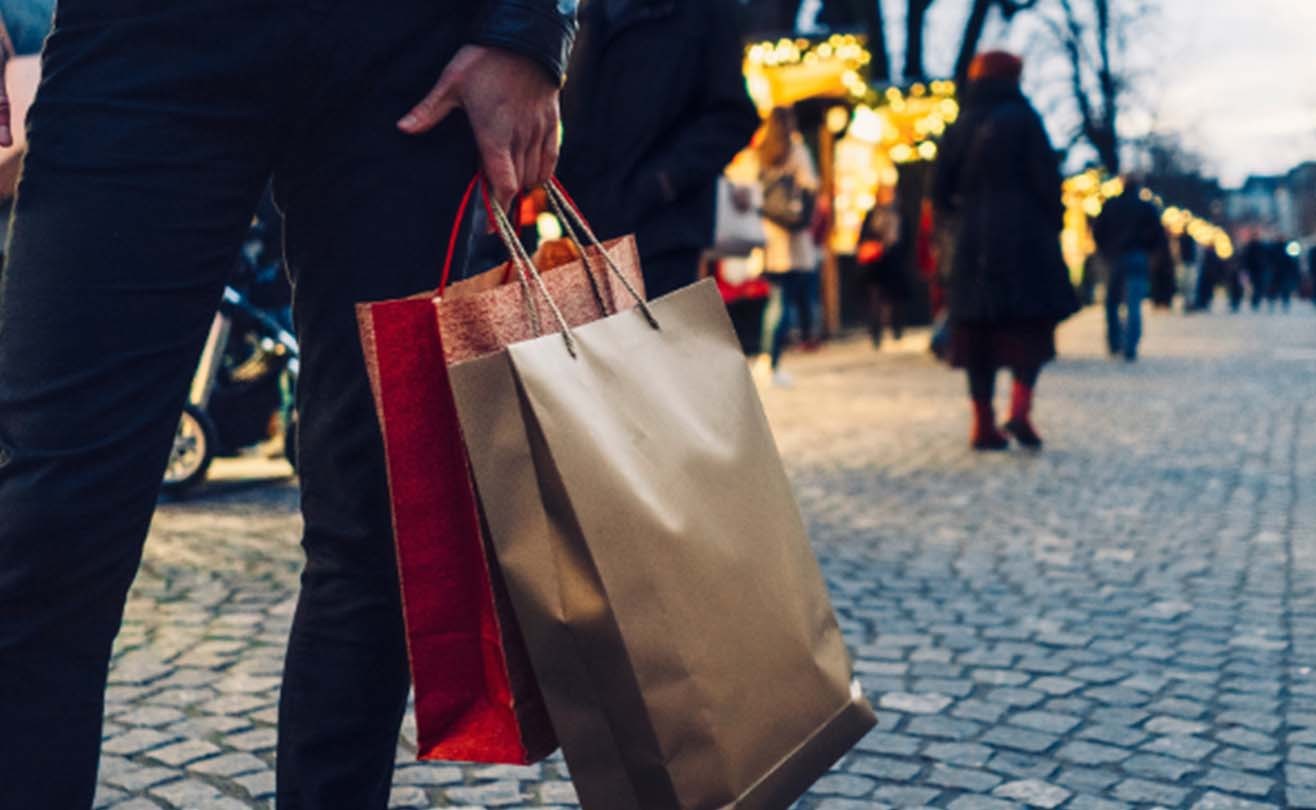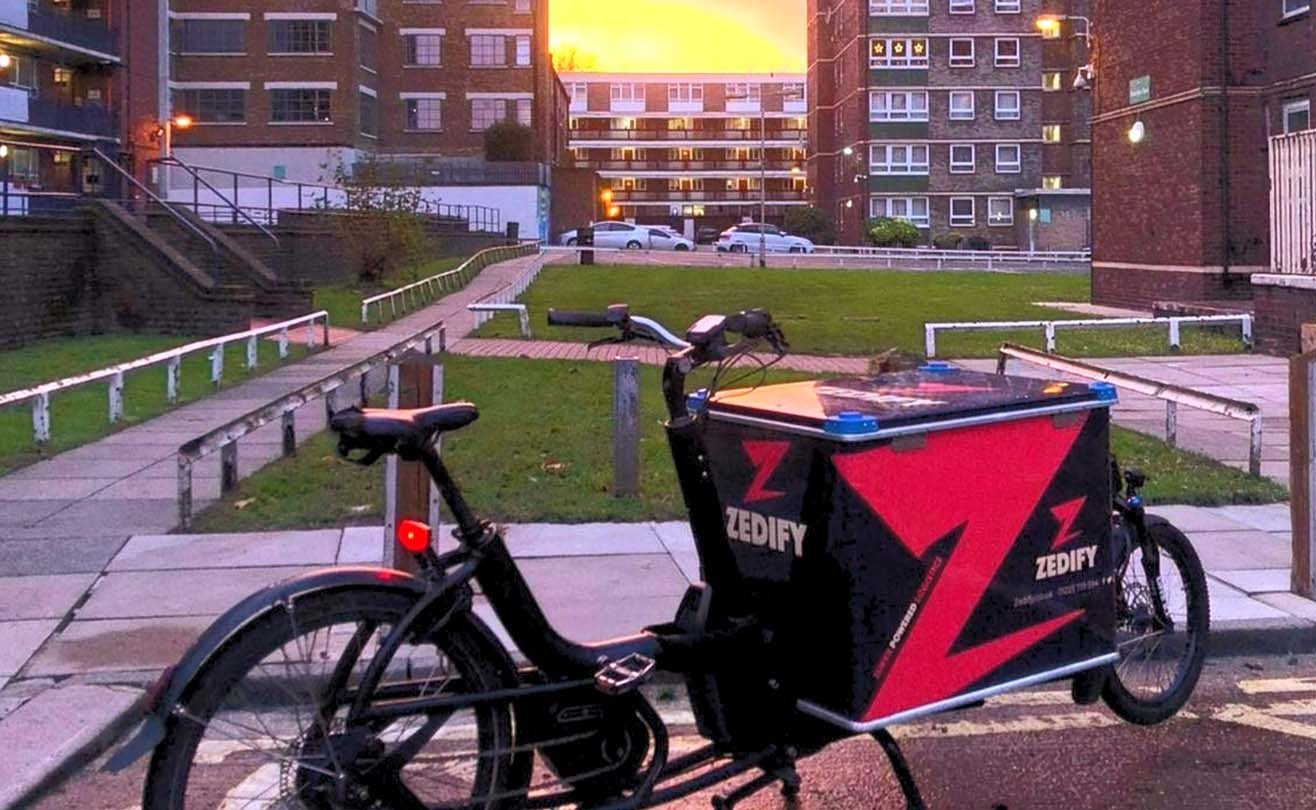
Howtopackageyourparcelsforlastmiledelivery
 December 15th, 2023
December 15th, 2023 Bex Young
Bex Young 8 minute read
8 minute readIn the run up to Christmas, dependable deliveries are more important to customers than ever. So, it’s important to make sure your parcel packaging does its bit right down to the last mile. Nobody wants to spend money on a Christmas gift only to find it’s been damaged on the final stretch.
Waste Management company, Biffa, announced they see a 40% increase in the waste they process during the festive period. A leading cause for this increase is a rise in the amount of packaging from online purchases.
At Zedify, we’re proud to be part of the sustainable for last mile logistics revolution. Backed by Barclays, we are one of the UK’s leading providers of sustainable last mile bike couriers across the country. But we know there’s more to it than just the delivery itself. The packaging is important too; and it can be a bit of a myth trying to do it right. In this article, we’ll take you through packaging parcels for last-mile delivery, talking all things packaging including:
- Materials
- Interiors
- Exteriors
- Seals
We’ll also offer some guidance on creating packaging that best represents your brand and impresses the customer when they open the door. Plus we’ll share a handful of ways to reduce product packaging during the Christmas period, demonstrating how sustainability can be prioritised even in the busiest quarter of the year.
If you want to go a step further and are keen to provide sustainable, efficient deliveries at the last-mile with courier services – get in touch with the Zedify team today.
Choosing a material for your parcel packaging is an important starting point. But is one material enough? Many courier services such as Zedify recommend the “three-layer method” of product packaging – these three layers being primary packaging, secondary packaging and tertiary packaging.
- Primary packaging covers the layer of packaging that directly touches a product. This layer offers a base level of protection and details key information about the product inside.
- When designed for distribution, secondary packaging facilitates ease of transportation while still featuring a business’ branding.
- Tertiary packaging is used to ship products packed in secondary materials – offering a final layer of protection that increases the robustness and shock absorbency of a parcel.
Other categories of parcel packaging
As well as the “three-layer method”, there are two other common considerations for parcel packaging. These are known as outside packaging and inside packaging.
Outside packaging
The parcels delivered to the doors of a consumer come in a host of shapes and sizes. But what is the right choice of packaging for your business’ product? And how could your parcel packaging be more sustainable?
Commonly used varieties of parcel packaging include:
- Cardboard boxes
- Cardboard cartons
- Flyer bags
Of these, cardboard options are best for recyclability without sacrificing performance. Unfortunately, waste generated by packaging and distributing parcels is still a central challenge across many sectors, especially over the Christmas period.
Sustainable packaging solutions
According to UK-based GWP Group, consumers and businesses use an average of 300,000 tonnes of cardboard packaging and material during the Christmas period. To reduce this impact, why not switch to recycled cardboard? This way, your business can maintain the sturdiness and security of cardboard packaging, while reducing the generation of new materials.
In addition to making mindful choices about the material itself, carefully considering the size of your package and the quantity of materials required for tertiary packaging not only reduces the waste generated by deliveries but reduces your business’ carbon footprint too.
When selecting the right solution for your product, your team must also consider factors such as product size, product weight, and the number of products within a single parcel. Using a parcel that is too large for your item produces unnecessary waste and limits the number of parcels that can be transported by a courier at a given time, which ultimately increases the costs for your business and the consumer.
Keeping the parcels compactly packaged also makes them ideal candidates for our micro-fulfilment services. Our cargo bike couriers not only maximise efficiency and reduce costs, but they also move your business closer to operating a net-zero supply chain.
In addition to engineering ways to reduce excess packaging, businesses may wish to take inspiration from projects which use ingenuity to maximise packaging efficiency. One example of this is the multi-use bag and hanger concept modelled for H&M – that sees a carrier bag designed to provide a secondary use as a hanger. These bags feature 80% less material than standard H&M designs and provide varied opportunities for re-use which can be otherwise limited with paper bags.
Further still, packaging initiatives such as those provided by RePack allow businesses to take a more ‘outsourced’ approach to packaging. RePack allow businesses to lease reusable product packaging that can be used for distribution. The packaging is picked up and delivered by couriers such as Zedify, then returned and cleaned after use – offering businesses the opportunity to benefit from external packaging providers, without compromising their individual needs or compromising their sustainability objectives.
Interior packaging
Interior packaging is especially important for businesses who distribute delicate products. Sturdy exterior packaging alone may not offer suitable cushioning for items such as glassware or crockery. In instances like this, packing fillers such as airbags, packing peanuts or crumpled paper provide additional shock absorption against in-transit turbulence or accidental mishandling.
Unfortunately, many interior shock absorbers could increase the overall waste production of a package, especially if the fillers used cannot be recycled. Luckily there are compostable, biodegradable solutions such as packing peanuts which offer a sustainable solution to protecting parcels without the added waste. In addition to packing peanuts, businesses such as IKEA are seeing new and unique varieties of protective internal packaging – particularly, biodegradable packaging made from mycelium fungus as an alternative to Styrofoam. The end-of-life performance of mycelium fungus sees it able to degrade in a natural environment, returning nutrients to the soil.
How to seal a package for delivery
Depending on the nature of the parcel, a variety of sealing options are available for parcel packaging. Packaging tape provides a cost-effective, easy-to-use solution for many businesses. However, tonnes of tape varieties can’t yet be recycled – again, bad news on the waste front. .
An alternative, water-activated gummed paper, makes for a sustainable way to seal, ideal for businesses with sustainability at the heart of their mission.
For larger parcels, staple seals offer a hardy and robust solution. While not the easiest on the eye, staples provide a hard-to-break seal into your package. In addition, staples can be removed from a parcel and recycled – although the challenges associated with doing so may make for a notable disincentive for customers.
Learn why choosing sustainable deliveries is always the right move >
How to make parcel packaging more interesting
While tertiary packaging is often more minimal than other varieties, some businesses seize the opportunity to maximise exposure and stamp their logo onto a parcel’s outer packaging.
Other decorative solutions include using custom tape or recyclable wrap that secures a product while also maximising brand exposure.
During the festive season, some brands go the extra mile in customising tertiary packaging, adding festive details or customised trim. By keeping customisations reduced, brands limit their use of excess packaging materials during the festive season.
When a business chooses to customise a container and its seal, the need for additional “new” materials is reduced. Not only does operating in this way reduce the quantity of packaging, but it also allows customers to follow the same recycling and waste disposal protocols used throughout the remainder of the year – maximising the likelihood of effective recycling.
Cut the carbon with last-mile deliveries from Zedify
There can be a lot to think about when trying to increase the sustainability of your business. How can I package my parcels sustainably? How can I reduce my business’ carbon footprint? How do I limit the carbon generated by my deliveries? Look no further – we’re ready to help you tackle these questions at Zedify.
Our next-gen sustainable deliveries can collect from store, office, or depot, using our cargo bikes to transport your packages along the final stretch of their distribution journey. Our cargo bikes offer an efficient, eco-friendly method for last-mile delivery across a number of the UK’s cities. Our couriers also take extra care when handling delicate or fragile packages, products such as flowers or perishable goods are always handled suitably by our trained, committed team members.
To find out how our courier services could fulfil your business’ last mile distribution needs, start a conversation with the team today. Keen to read more from us? Take a look at some other blogs clearing up all things last-mile delivery. Articles include, What Does Last-Mile Delivery Look Like in London, How Important is Next Day Delivery to Your Customer? And Three Strategies to Help Your Business Reduce its Scope 3 Emissions.




